|
Education for Sustainable Development - Part 7
SUMMARY
|
This issue has four pages. A summary of the contents is as follows:
Page 1 is the seventh of the current series of research reports on "Education for Sustainable Development" (ESD). Page 1 has nine sections plus updated announcements, key links, and recent news.
Section 1 - brief progress report on the ESD research project.
The collapse in participation for V1.7 is an indication of "survey fatigue." Therefore, there is a hiatus on posting additional surveys while V2.0 is in preparation. It is anticipated that V2.0 will be available in January 2010. V2.0 will take into account all the feedback gathered from the 2009 surveys but will be a fresh re-start relative to format, content, and analysis methodologies.
Section 2 - combined analysis of the 2009 survey versions (V0 to V1.7)
The combined analysis of the 1004 responses received for the 2009 survey versions (V0 to V1.7) is underway. This section presents descriptive statistics on the averages and distributions of relevance rankings (exactly the same question in all versions). In a 1 to 9 scale, the average is higher than 7 for all the UNESCO ESD themes and all the distributions are unimodal and strongly skewed to the right (high relevance). A critical analysis of the numerical results is included in order to provide insight on their meaning for ESD practices.
Section 3 - the phases of integral human development.
This section is a survey of three psychological theories (or models) of integral human development. It provides a comparative analysis of the human development models proposed by Carl Jung, Roberto Assagioli, and Abraham Maslow. The three models use different terminology for human development phases but share the same goal: the fullest possible human self realization, which can be attained by balancing the inner journey with self giving to others.
Section 4 - the nuptial-family context for integral human development.
It is time to overcome all taboos about human sexuality. The most fundamental context for integral human development is the nuptial covenant between men and women (Genesis 2:24). This covenant is a fundamental expression of the divine gift of love, which in turn bears fruit by channeling the divine gift of life (Psalm 127:3). The nuptial covenant can be heterosexual or homosexual -- what really matters is mutual self giving. Heterosexual couples can have children naturally. Homosexual couples can have children by adoption. The divine gifts of love and life cannot be monopolized by any artificial norm. Families, and extended families, must remain rooted in the nuptial covenant in order to foster integral human development. This is the path towards humanity becoming a human family.
Section 5 - the socioeconomic context for integral human development.
Beyond the family, there must be a socioeconomic context capable of nurturing integral human development. Children must grow and learn by imitating others in the practice of human solidarity, seeking ways to attain and sustain nonviolence and social justice, and taking good care of the human habitat. Locally, social responsibilities include responsible use of freedom, including freedom of speech. Bombarding children and youngsters with violence and sex is not conducive to integral human development. Likewise, bombarding people with advertising pursuant to consumerism and instant gratification is not conducive to integral human development. But there is an emerging need to understand the global socioeconomic context for IHD.
Section 6 - the socioecological context for integral human development.
At this point in human history, overwhelming evidence is emerging about the urgency of reversing environmental deterioration. The two basic strategies are mitigation and adaptation. Mitigation buys time, but mitigation alone may lead to prolonging the agony. Therefore, humanity is confronted with the splendid challenge of adaptation to new ways of life that are healthy for both humans and the human habitat. Hopefully, this process will be supported by adapting technological developments so as to reduce useless junk and enhance quality of life. There are limits to junk, but there are no limits to integral human development.
Section 7 - the sociopolitical context for integral human development.
As we all know, "politics is the art of the possible." Neither mitigation nor adaptation will be possible unless short term profits cease to be the top priority for businesses and other institutions. Both extreme socialism and extreme capitalism have been shown to fail in reducing the gap between the very rich and the very poor. Both have failed in fostering social justice as is required for sustainable peace. It follows that institutions of governance must undergo a reformation pursuant to mitigation of power struggles and adaptation to civilized resolution of local, national, and global issues. Fully participatory democracy is surely the way to go, but people must insist on democratic structures that take into account the basic socioeconomic needs required for integral human development.
Section 8 - the religious-spiritual context for integral human development.
Religion is back! God is back! Actually, God is always present in human history, even if some might prefer to see religions disappear because "God is dead." The influence of religion (and religious institutions) on human and social development is undeniable, and it can have both positive and negative impacts on integral human development. Authentic religious devotion can lead to sacrificial self giving. But fanatical (fundamentalist) religious devotion can lead to barbaric violence and terrorism. Reflection on the sacred scriptures from various religious traditions leaves little doubt as to the kind of religious devotion that God desires.
Section 9 - some suggestions for prayer, study, and action.
The voice of God continues to resound in the events of human history. At times, it is difficult to discern the divine signal from the noise of ideologies and strident dogmatizations manufactured by human hands. The tripod of honest prayer, continuous study of scriptures and traditions, and individual or group actions and initiatives, is both necessary and sufficient to forge ahead in keeping what is good and letting go of what is bad.
Page 2 is an invited paper entitled
Ecohumanism as a Developmental Crossing, by Leslaw Michnowski, Professor of Management, Saint Cross University, Kielce, Poland, on the use of information technology to coordinate the management of global issues and crisis situations.
Page 3 is an invited paper entitled
No Fishhooks, by Bruce Bridgeman, Professor of Psychology and Psychobiology at the University of California-Santa Cruz, on the future of oil and the kinds of oil-free technologies that might be needed in the future.
Page 4 is an invited paper entitled
Education Based Only on Reason is Incomplete, by Rowan Williams, Archbishop of Canterbury, on the need for integrating faith and reason in education.
Page 5 is an invited paper entitled
Integral Human Development and Health: Psychosynthesis in Education for Sustainable Development, by Ewa Bialek, Psychosynthesis Institute of Warsaw, on psychosynthesis in education for sustainable development.
|
| |
|
TABLE OF CONTENTS & NAVIGATION LINKS
| |
1. Education for Sustainable Development
The collapse in participation for V1.7 is an indication of "survey fatigue." Therefore, there is a hiatus on posting additional surveys while V2.0 is in preparation. It is anticipated that V2.0 will be available in January 2010. V2.0 will take into account all the feedback gathered from the 2009 surveys but will be a fresh re-start relative to format, content, and analysis methodologies.
Figure 1 shows the number of participants for each version of the test survey, 0 to 1.7. The number of participants grew exponentially from v) to V1.6, then collapsed in V1.7.
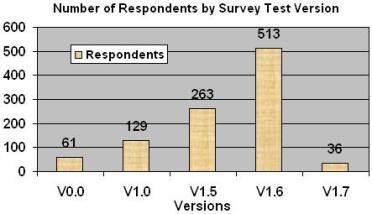
Figure 1. Number of Respondents for Versions 0 to 1.7
Exponential growth followed by collapsed is a well known behavior mode for many systems. Exponential growth of socioeconomic systems better be managed before the collapse occurs; else, the collapse may bring about painful social dislocations and much human suffering in addition to further environmental deterioration (see, for example, Collapse: How Societies Choose to Fail or Succeed, by Jared Diamond, 2005). This is precisely the situation we face today, as shown
here,
here,
here,
here,
here,
here,
here,
here,
here,
here,
here,
here, and
here,
In the ESD research project, it is a matter of allowing time for "survey fatigue" to subside. A combined analysis of all responses to versions 0 to 1.7 is underway (next section). Version 2.0 is in preparation, and the current plan is to release it in conjunction with the January 2010 issue.
2. Combined Analysis of Surveys V0 to V1.7
The combined analysis of the 1004 responses received for the 2009 survey versions (V0 to V1.7) is underway. This section presents descriptive statistics on the averages and distributions of relevance rankings (exactly the same question in all versions). In a 1 to 9 scale, the average is higher than 7 for all the UNESCO ESD themes, and all the distributions are unimodal and strongly skewed to the right (high relevance). A critical analysis of the numerical results is included in order to provide insight on their meaning for ESD practices.
Figure 2 displays the average relevance ranking for each UNESCO ESD theme. These are the relevance ranking averages for the 1004 responses to sections V0 to V1.7. In previous issues it has been shown that the averages calculated from the responses to each version are stable and in the same range. Strictly speaking, the V0 to V1.7 samples are not independent (some responders did two or more versions), but the consistency from version sample to version sample and the total sample for all versions, while not statistically significant, is strong indication that there is a wide consensus supporting the UNESCO ESD themes.
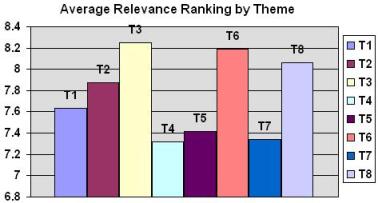
Figure 2. Average Relevance Rankings for V0 to V1.7 (N=1004)
The UNESCO ESD web site has recently been revised, but the definitions of the eight themes remain essentially unchanged. The order in which the themes are listed has changed, but we keep the same ordering for themes 1 to 8 in order to avoid confusion. The definitions for the eight themes are now located in the following web pages:
Figure 3 shows the average relevance rankings by ESD theme for the 1004 responders in Pareto order, i.e., highest to lowest:
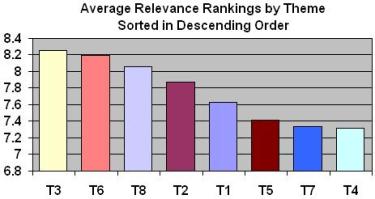
Figure 3. Average Relevance Rankings for V0 to V1.7 in Descending Order (N=1004)
Environmental stewardship (T3), peace and human security (T6), and sustainable consumption (T8) get the highest relevance rankings, followed by health promotion (T2) and gender equality (T1). Cultural diversity (T5), sustainable urbanization (T7), and rural development (T4) get the lowest average rankings albeit still over 7 in the 1 to 9 relevance scale. To check that the distributions of rankings are uni-modal, the number of responses for each rank (1 to 9) were counted, and the results are shown in Figure 4. Clearly, the distributions are uni-modal and strongly skewed to the right, i.e., the higher relevance rankings.
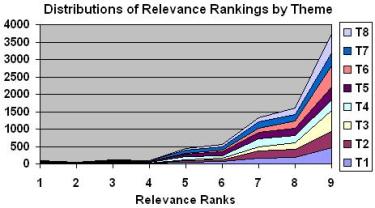
Figure 4. Distributions of Relevance Rankings for V0 to V1.7 (N=1004)
Critical Analysis of Figures 2, 3, and 4
Irrespective of the inferential significance of these numbers, due diligence requires the realities underneath the numerical calculations be examined. A "sanity check" of these results can be summarized as follows:
- Regarding Figure 2, there can be no doubt that the high rankings for all the UNESCO ESD themes are consistent with the full range of knowledge available on sustainable development, including the data of experience. However, it should be noted that the eight themes, and both the theoretical and experiential knowledge about them, is of the observable kind that is amenable to conscious perception. The numbers may also be a mirror of the collective unconscious, but it does not necessarily follow that the collective unconscious is intrinsically ethical, let alone unchangeable.
- Consider Figure 3. Given the choice of attaining peace and human security (T6) versus attaining a pristine environment (T3), it would seem that T6 is ethically more critical than T3. Likewise, given the choice of attaining gender equality (T1) versus attaining a pristine environment (T3) and/or sustainable consumption (T8), it would seem that T1 is ethically more important than any of the others. In fact, gender equality (T1) is arguably a prerequisite for both peace and human security (T6) and health promotion (T2); so, from an ethical standpoint, it should be the highest priority. Needless to say, these distinctions imply value judgments which are both difficult and unavoidable. These value judgments go to the heart of the matter, but eliciting them and having a civilized dialogue about them requires a degree of human maturity (i.e., integrated human development) that is hard to find.
- The distributions plotted in Figure 4 again show an overwhelming consensus among the 1004 respondents: each of the eight UNESCO ESD themes is highly relevant, and the few low rankings probably reflect outliers resulting from responder mistakes and/or responder polarization toward having no faith in humankind. Such polarization is often induced by the history of humanity being full of events driven by violence. But even though all humans have a propensity to violence and other forms of social misbehavior, no human being is destined to act violently and/or socially misbehave. Human nature may be weak and broken, but it still encapsulates inner energies for good that await liberation.
More on these points in the next section.
3. Phases of Integral Human Development
This section is a survey of three psychological theories (or models) of integral human development. It provides a comparative analysis of the human development models proposed by Carl Jung, Roberto Assagioli, and Abraham Maslow. The three models use different terminology for human development phases but share the same goal: the fullest possible human self realization, which can be attained by balancing the inner journey with self giving to others.
In the previous section, it was suggested that a high degree of personal maturity (i.e., integral human development) is required to go beyond what is observable, and therefore amenable to conscious perception, in the complex process of sustainable development. This is critical, since sustainable development is both driven by human beings and attempts to attain the fullest possible development of each person. Granted that such human development can become reality only in the context of relations with others (and this will be the subject of sections 4 to 8) let us consider in some detail what is known about the process that seeks to attain integral human development in each human person.
Research in human psychology has shown that, when the chips are down, human behavior is mostly driven by energies and motivations that emerge from the unconscious. Table 1 summarizes three models of integral human development that take into account the somatic, conscious, and unconscious dimensions of human nature. There are many other models (or theories) but let's start with just these three, as they seem to be highly relevant to ESD:
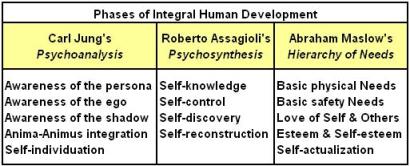
Table 1. Phases of Integral Human Development
Table 2 provides further albeit concise elaboration for each model. The phases are not strictly sequential for any of the models. Rather, they are recursive and life-long.
The Psychoanalysis Model of Carl Jung
Carl Jung (Switzerland, 1875-1961) postulates five phases or levels of maturity: awareness of the persona, awareness of the ego, awareness of the shadow, awareness of the anima (the feminine element in men) or animus (the masculine element in women), and self-individuation. The persona is the "mask" that a person wears in front of others, so that they see what the person want others to see. The ego is the conscious self, or what the person consciously knows h**self to be. The shadow resides in the outer layer of the unconscious and contains unwanted feelings and motivations that have been repressed but nevertheless influence the person's behavior, often in undesirable ways (e.g., Romans 7:19).
According to Jung, the recognition and integration of the shadow is the "apprentice-piece of becoming whole." The anima (in men) and the animus (in women) abide in the next inner layer of the unconscious and are decisive in the person being able to attain a health and well balanced personality (the reader may want to revisit Section 3 of the September 2009 issue). According to Jung, being in relation with and integrating the anima or animus is the "master-piece of becoming whole." Self-individuation is reached (usually during the second half of life) with "the integration of the unconscious into consciousness," when the person becomes what he or she is, h** own self, fully liberated from the false pretensions of the persona and the manipulation of the unconscious forces. Such a person is really free to become what he or she really is, for h**self and for others.
From the perspective of integral human development, Jung's greatest insight is that there is woman in man and there is man in woman. At least for those who believe that there is a Communion of Persons in one God, and that there is both masculinity and femininity (plus much more) in God, now the stories of creation make more sense: "So God created man in his own image, in the image of God he created him; male and female he created them." Genesis 1:27. "The man said, "This is now bone of my bones and flesh of my flesh; she shall be called 'woman,' for she was taken out of man." Genesis 2:23. "This is the written account of Adam's line. When God created man, he made him in the likeness of God. He created them male and female and blessed them. And when they were created, he called them "man"." Genesis 5:1-2.
References
|
The Psychosynthesis Model of Roberto Assagioli
Roberto Assagioli (Italy, 1888-1974) built a model consisting of four stages of human development (self-knowledge, self-control, self-discovery, and self-reconstruction) and seven levels of consciousness and self-realization, as follows:
Assagioli's Oval Diagram
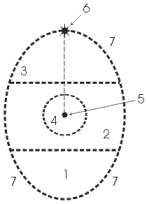
Source: Wikipedia
|
Assagioli's Seven Levels
1. Lower Unconscious - contains "bad" feelings and traumatic memories.
2. Middle Unconscious - unconscious but supportive of normal conscious living.
3. Higher Unconscious - "our higher potentialities which seek to express themselves." (Assagioli)
4. Consciousness - the psychological capability to adjust to daily events.
5. Conscious Self - "the direct "reflection" or "projection" of Self." (Assagioli)
6. Transpersonal (Higher) Self - transcends the Self to include the relational and spiritual realms.
7. Collective Unconscious - the shared human knowledge and experience accumulated over the ages.
|
"Only the development of his inner powers can offset the dangers inherent in man's losing control of the tremendous natural forces at his disposal and becoming the victim of his own achievements." - Roberto Assagioli, Photosynthesis Online
References
|
The Hierarchy of Needs Model of Abraham Maslow
Abraham Maslow (USA, 1908-1970) created the "hierarchy of human needs" in the 1940s. It is a very well-known model, and very useful. The Jung and Assagioli models are focused on the human psyche, but Maslow's model explicitly takes into account the physiological, safety, emotional, love/belonging, esteem/self-esteem, and self-actualization stages of integral human development. The hierarchy of human needs is usually
represented as a pyramid, with the most basic needs (physical, physiological) at the bottom and the self-actualization needs (self-identity, purpose in life) at the top.
"Maslow's hierarchy of needs is predetermined in order of importance. It is often depicted as a pyramid consisting of five levels: the lowest level is associated with physiological needs, while the uppermost level is associated with self-actualization needs, particularly those related to identity and purpose. The higher needs in this hierarchy only come into focus when the lower needs in the pyramid are met. Once an individual has moved upwards to the next level, needs in the lower level will no longer be prioritized. If a lower set of needs is no longer being met, the individual will temporarily re-prioritize those needs by focusing attention on the unfulfilled needs, but will not permanently regress to the lower level. For instance, a businessman at the esteem level who is diagnosed with cancer will spend a great deal of time concentrating on his health (physiological needs), but will continue to value his work performance (esteem needs) and will likely return to work during periods of remission." Maslow's Hierarchy of Needs, Wikipedia, 2009.
References
- A Theory of Human Motivation, A. H. Maslow, 1943.
- Maslow's Hierarchy of Needs, Simons et al, 1987.
- A.H. Maslow's Vision of Human Nature - Part 1, Richard Lowry, 1999.
- A.H. Maslow's Vision of Human Nature - Part 2, Richard Lowry, 1999.
- Maslow's Hierarchy of Needs, Huitt, 2004.
- Abraham Maslow, Transpersonal Psychology, and self-Transcendence, Conway, 2008.
- Maslow's Hierarchy of Needs, Wikipedia, 2009.
|
Table 2. Synopsis of the Jung, Assagioli, and Maslow Models
Maslow's model is the most useful for thinking about sustainable development as a human-centric process. Those who live in extreme poverty are constrained to remain at the bottom of the pyramid. Who can think about self-actualization when the daily struggle is to meet the basic needs of food and shelter? Assagioli's model is most useful for thinking about human development in the context of sustainable development. His approach to education as the best way to prevent the need for costly and time consuming psychotherapy is, at least to some extent, valid for all children and adults whose minimum basic needs are met or at least partially met. Jung's model is costly and time consuming, but remains the most powerful for integral human development in that it integrates the masculine and feminine polarities of the human person. There is a need to integrate this crucial factor into psychosynthesis in terms of both education and psychotherapy.
The integration of the masculine and feminine polarities in each person is indispensable for integral human development. Children need to perceive early that human nature is both male and female, not male or female. This is the path to gender equality, and it is the only way to untie the gordian knot that suffocates education for sustainable development and the sustainable development process itself.
4. The Nuptial-Family Context for IHD
It is time to overcome all taboos about human sexuality. The most fundamental context for integral human development is the nuptial covenant between men and women (Genesis 2:24). This covenant is a fundamental expression of the divine gift of love, which in turn bears fruit by channeling the divine gift of life (Psalm 127:3). The nuptial covenant can be heterosexual or homosexual -- what really matters is mutual self giving. Heterosexual couples can have children naturally. Homosexual couples can have children by adoption. The divine gifts of love and life cannot be monopolized by any artificial norm. Families, and extended families, must remain rooted in the nuptial covenant in order to foster integral human development. This is the path towards humanity becoming a human family.
Each generation of human beings is responsible for conserving, improving, and transmitting the legacy received from previous generations to their children, grandchildren, and future generations. To this end, God has endowed all human beings with two wondrous gifts: the gift of love and the gift of life. Every human being is responsible for treasuring these gifts and using them well, i.e., for the glory of God and the good of humanity. But they are often taken for granted, abused, and manipulated in every conceivable way. Irresponsible misuse of human sexuality is a tragedy that continues to harm humanity from generation to generation. A better understanding and appreciation of human sexuality may be the most critical need of human civilization; and gender equality, coupled with responsible sexual behavior, is a "sign of the times" for the 21st century.
Human Sexuality
Sexual differentiation starts soon after conception, and nine months later a baby is born showing (in most cases) a clear genital differentiation: boy or girl. As they grow and become men and women, there are observable differences in various psychosomatic dimensions: chromosomes, dominance of certain hormones, body language, body measurements, dominant ways of thinking. But humans are either male or female only in the genital dimension. In every other psychosomatic dimension they are bisexual, i.e., both male and female, in the sense that there is a male "polarity" in females and a female "polarity" in males. Human nature is both male and female, most probably has been so since the emergence of hominoids in human prehistory, and certainly has been so since the emergence of homo sapiens sapiens at the inception of human history. This is revealed by the most ancient and sacred texts (Genesis 1, 2, 5) and, as discussed in the previous section, has been scientifically confirmed by psychologists and psychiatrists since the early 20th century.
The sign of the times during the 17th and 18th centuries was to overcome slavery and attain freedom from colonial powers. The sign of the times during the 20th century was to free nations from totalitarian regimes. There is a growing consensus that the sign of the times for the 21st century is overcoming all primitive taboos and artificial aberrations about human sexuality. These include overcoming the so-called phallic syndrome; all manner of gender discrimination in society and religion; and such things as female mutilation, incest, selling of girls as brides, sex trafficking. Another urgent priority is to recognize that homosexuals are as normal as heterosexuals, even though they might not be as numerous. Just as planet Earth is not the center of the universe, neither the male genitals nor the female genitals are the summit of humanity. Just as slavery and racism have been shown to be gross forms of prejudice and injustice, it must be recognized that there is nothing immoral or intrinsically wrong about homosexuality.
The Nuptial Gift of Love
For this reason a man will leave his father and mother
and be united to his wife, and they will become one flesh.
Genesis 2:24
The nuptial gift of love is of divine origin and intrinsic to human nature, but sharing it is a human choice. The adjective "nuptial" comes from the Latin nuptialis, or relating to a wedding covenant. A nuptial covenant must be the free choice of two persons, and it must be a life-long commitment. The use of "must" here should not be understood in a moralizing sense. Experience confirms that the choice must be free and enduring if it is to be for the good of both the couple and society. Becoming one flesh is not something that can be done just for instant gratification devoid of responsibility. Among humans, becoming one flesh is a sacred act and one that is primarily an experience mutual self-giving and mutual submission rather than selfish unilateral pleasure or domination. Else, it is an animal act and one that dehumanizes and makes the experience incompatible with integral human development. For integral human development happens in self-giving and fidelity to others, not in ephemeral acts of self-gratification. In this regard, it is noteworthy that human beings are the only ones that can have sexual relations face to face. Becoming one flesh, and doing so face to face, implies a responsible act of mutual and stable commitment to each other. In this day and age, when the gift of love has been trivialized and even reduced to a commercial product, it is crucial for people to recognize that "casual sex" is bad for human health and has nefarious social effects that are readily observable. For more on the nuptial gift of love, specifically as it pertains to sustainable development, the reader may want to see the May 2008 to August 2008 issues of this journal.
The Nuptial Gift of Life
Behold, children are a gift of the Lord,
the fruit of the womb is a reward.
Psalm 127:3
The nuptial gift of life is also of divine origin and intrinsic to human nature, and sharing it is also a human choice that husband and wife make face to face, assuming responsibility for the new life they might pro-create. Again, the purpose of this journal is not to indulge in abstract moralizations but to examine everything in light of what is good or bad for sustainable development and, specifically, integral human development. Heterosexual couples can have children naturally. Both heterosexual and homosexual couples can have children by adoption. Human life starts at conception but must be nurtured and developed at each point during the life of each human person. Children need parents who assume responsibility for their growth, education, and wellbeing. Adults need friends or mentors to assist them in the process of life-long education, and to help them in the process of discerning their vocation so that in due time they can become, in Maslow's words, "what they were born to be." Children and young people can "become what they are," and in due time can assume responsibility for the wellbeing of future generations, if taking good care of them replaces consumerism as the top priority of those of us who are now in the second and third phases of life. This is what being "pro-life" is all about. Being "pro-life" is about recognizing that aborting a baby is a tragedy; that each human life that is cut short by wars and terrorism is a tragedy; that each case in which a person is prevented to become "what he or she was born to be" is a tragedy. Another tragedy, which is common today, is to put old people aside when they can no longer "compete" with younger people, thereby "aborting" the fruits of their long years of experience and accumulated wisdom. For more on the nuptial gift of life, specifically as it pertains to sustainable development, the reader may want to see the May 2008 to August 2008 issues of this journal.
Bisexuality, Heterosexuality and Homosexuality
Bisexuality is not a choice; psychologically, all humans are bisexual.
Heterosexuality is not a choice; most humans are heterosexual.
Homosexuality is not a choice: some humans are homosexual.
Scientists have not yet been able to elucidate how is it that some hormonal and neural processes make most men and women heterosexual and some men and women homosexual. But this is no justification to say that homosexuality is an "objective disorder." For we know that, while all human beings share the same human nature, each human being is unique. Likewise, we know that there is a psychosomatic "continuum" of all sexual chacteristics, just as there is a psychosomatic "continuum" of each and every human characteristic. Each human being is unique along this multidimensional continuum, and no particular combination of human characteristics can claim to be "normative" in any psychosomatic or moral sense. In fact, uniqueness in diversity is what makes each person capable of contributing what only he or she can contribute, thereby enriching humanity and collaborating with God in the ongoing process of creation. Thus the beauty of human "unity in diversity."
The Nuclear Family
Healthy family life is rooted in the nuptial gifts of love and life. This applies especially to the nuclear family composed of parents and their children. It is well known that nuclear families are the "cells of society." But there is more. Healthy nuclear families are the "incubators" of integral human development. Children who come from unhealthy nuclear families, or who were abused by their parents, or who were conceived in "casual sex" and then abandoned or neglected in one way or another, generally show deep psychological scars throughout life. Very few of these children "become what they are" and "what they were born to be." A few of these abandoned or neglected children are saved by good adopting parents. Adoption is so much better than abortion!
The Extended Family
The so-called "extended family" is another blessing for children. Grandparents, aunts and uncles, cousins, and even distant relatives, form a web of life that contributes to nurturing children both physically and psychologically. Extended families are like "microwave ovens" for integral human development. It is in extended families that children learn early that nobody is self-sufficient, that people need each other. Sometimes the support of extended families can compensate, at least partially, for the lack of a healthy nuclear family. This is often the case in "single-parent" nuclear families. The presence of both "father" and "mother" is very important in the life of children and, ideally, the extended family should be a web of nuclear families. But real life is seldom ideal, and it is time to recover the many blessings of extended families.
The Human Family
Human civilization is about building humanity as a family: a family of nations, a globally extended family. In this regard, the teachings of the Baha'i faith are worth studying. The unity of humanity is one of the central teachings of the Bahá'í Faith. Bahá'í teachings state that since all humans have been created in the image of God, God does not make any distinction between people regardless of race or colour. Thus, because all humans have been created equal, they all require equal opportunities and treatment. Thus the Bahá'í religion promotes the unity of humanity, and teaches that people's should have a world-embracing vision, i.e., people should love the whole world rather than just their nation. This teaching, however, does not mean unity with uniformity. The Bahá'í writings specifically advocate the principle of unity in diversity whereby the full rainbow of variations in the human race is valued. The reader may want to know more about
Bahá'u'lláh (the 19th century Persian founder of the religion) and his teachings on the unity of humanity,
gender equality, unity in diversity, the unity of religion and the unity of God.
The unity of humanity mirrors the unity of God; and God is a Family!
5. The Socioeconomic Context for IHD
Beyond the family, there must be a socioeconomic context capable of nurturing integral human development. Children must grow and learn by imitating others in the practice of human solidarity, seeking ways to attain and sustain nonviolence and social justice, and taking good care of the human habitat. Locally, social responsibilities include responsible use of freedom, including freedom of speech. Bombarding children and youngsters with violence and sex is not conducive to integral human development. Likewise, bombarding people with advertising pursuant to consumerism and instant gratification is not conducive to integral human development. But there is an emerging need to understand the global socioeconomic context for IHD.
Each reader is familiar with the local socioeconomic context in their local area. Therefore, this section is focused on the global socioeconomic context for IHD. Doing so may have been irrelevant a few decades ago, but it is highly relevant now given the increasing interconnectivity of nations and institutions throughout the world. There is no such thing as a self-sufficient national economy; globalization has taken care of that, and the current global crisis provides irrefutable evidence that we "are all on the same boat" or, in Kenneth Boulding's famous expression, we all live in a single "spaceship planet." Whether we like it or not, the Baha'i prophecy about the unity of humanity is becoming a reality. But what kind of reality and what kind of unity?
An excellent public domain resource to study the "state of the world" is the Earth Web Site of the Canadian Global Education Project (GEP). It provides a comprehensive report on the "state of the world" organized in the following sections:
- Human Conditions (Social, Demographic, Education, Health, HDI)
- Global Ecology (Oceans, Biomes, Climate Change, Biodiversity)
- Energy Supply (Oil, Coal, Natural Gas, Consumption, Emissions, Peak Oil)
- Food and Soil (Arable Land, Grain Production & Consumption, Soils)
- Fresh Water (Water Supply, Water Contamination, Uses of Water)
- Development & Debt (GDP, Population, GDP per Capita, Debt Trends)
- Wealth & Power (Global Power, Politics, Business, Finance, Wealth Inequities)
- Fishing & Aquaculture (Global Fisheries, Aquaculture Production, Fish Stocks)
- Toxic Pollution (Toxic Chemicals, Levels in Children, Nuclear Waste)
- Weapons & Warfare (Military Spending, Exporters, Uranium Depletion)
As we all know, it is impossible to separate social, economic, political, ecological, and religious dimensions of dimensions of IHD, let alone the total sustainable development process. But analysis requires decomposition into parts to be subsequently re-integrated for increased understanding. From a purely socioeconomic perspective, let us focus on sections 1, 6, and 7. There can be no doubt that the two most critical factors for SD, ESD, and IHD are the gap between the very rich and the very poor (which keeps increasing both within and between nations) and gender inequities which a few of the most advanced nations are starting to resolve but otherwise persist worldwide. Regarding the rich-poor gap, the following chart is self-explanatory:
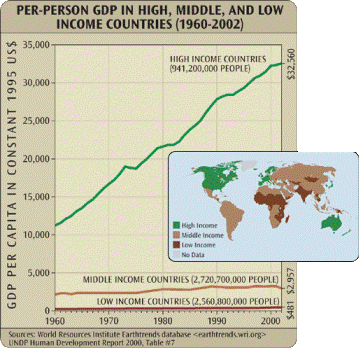
Figure 5. GDP Per Capita for High, Medium and Low Income Countries
Source: Global Education Institute (Economic Development)
Regarding gender equality, a very comprehensive resource is the Gender and Human Development, Human Development Report, United Nations, 1995 (free download). Another excellent resource is the RePEc (Research Papers in Economics) online library. The following paper clearly makes the case for gender equality as a pivotal driver of economic development:
|
Abstract: "International organizations have expressed widespread agreement that gender equality is an important social and economic goal. Well-being is a multidimensional measure of material status and encompasses income, health, education, empowerment, relative economic and social status, and security, although precise definitions and emphases on the individual components vary. Since the early 1980s, a number of international agencies have produced analyses of gendered trends in well-being. This paper compares and critically assesses the contribution of some of these studies to understanding the state of gender equality and the causal mechanisms that inhibit or promote such a goal." The Road to Gender Equality: Global Trends and the Way Forward, by Stephanie Seguino,
University of Connecticut, 2006.
|
The issue of economic inequality is usually characterized in terms of income per capita, but other issues lurk under the surface, notably the issue of gender equality and the severe disparities in the integral human development of men and women. Gender equality is really the sword that can untie the gordian knot of sustainable development. But gender inequalities are the intersection of many different factors which themselves constitute a deeper gordian knot. Keep reading ....
6. The Socioecological Context for IHD
At this point in human history, overwhelming evidence is emerging about the urgency of reversing environmental deterioration. The two basic strategies are mitigation and adaptation. Mitigation buys time, but mitigation alone may lead to prolonging the agony. Therefore, humanity is confronted with the splendid challenge of adaptation to new ways of life that are healthy for both humans and the human habitat. Hopefully, this process will be supported by adapting technological developments so as to reduce useless junk and enhance quality of life. There are limits to junk, but there are no limits to integral human development.
IHD cannot possibly happen without a human habitat, and can happen only to some extent in a deteriorated human habitat. It follows that the socioecological context for IHD includes the full range of environmental issues that must be faced in order to conserve and/or restore the human habitat. It also includes all the human-related negative impacts on the natural environment, as well as all the human-related decisions and actions pursuant to conserving and/or restoring natural resources. This means that the previous section blends into this one; for, as Vandana Shiva has stated so eloquently, "resources flow from the poor to the rich, and pollution flows from the rich to the poor."
Wikipedia provides a very useful taxonomy of environmental issues, inserted below with some minor corrections and additions:
-
- Soil
— Soil conservation
• Soil erosion
• Soil contamination
• Soil salination
-
- Water pollution
— Acid rain
• Eutrophication
• Marine pollution
• Ocean dumping
• Oil spills
• Thermal pollution
• Urban runoff
• Water crisis
• Marine debris
• Ocean acidification
• Ship pollution
• Thermal pollution
• Urban runoff
• Wastewater
- Air pollution
— Smog • Tropospheric ozone
• Indoor air quality
• Volatile organic compound
• Particulate matter
• Sulphur oxide
-
- Consumerism
— Consumer capitalism
• Planned obsolescence
• Over-consumption
- Fishing
— Blast fishing
• Bottom trawling
• Cyanide fishing
• Ghost nets
• Illegal, unreported and unregulated fishing
• Overfishing
• Shark finning
• Whaling
- Logging
— Clearcutting
• Deforestation
• Illegal logging
- Mining
— Acid mine drainage
• Mountaintop removal mining
• Slurry impoundments
It is hoped that this taxonomy of issues/links is useful to the reader for further exploration. Another reason for including it hare is that it provides a "big picture" of the magnitude and complexity of environmental sustainability at the global level. Awareness of this "big picture" of environmental issues, and awareness of individual and institutional responsibilities in resolving these issues, is a "must" for IHD.
7. The Sociopolitical Context for IHD
As we all know, "politics is the art of the possible." Neither mitigation nor adaptation will be possible unless short term profits cease to be the top priority for businesses and other institutions. Both extreme socialism and extreme capitalism have been shown to fail in reducing the gap between the very rich and the very poor. Both have failed in fostering social justice as is required for sustainable peace. It follows that institutions of governance must undergo a reformation pursuant to mitigation of power struggles and adaptation to civilized resolution of local, national, and global issues. Fully participatory democracy is surely the way to go, but people must insist on democratic structures that take into account the basic socioeconomic needs required for integral human development.
The world has been moving toward democracy since early in the 19th century:
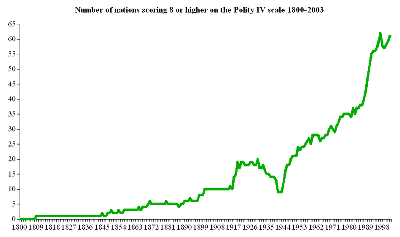
Figure 8. Increase in the Number of Democratic Nations (1800-2003)
Source: Wikipedia Article on Democracy
Note: Number of nations 1800-2003 scoring 8 or higher on the Polity IV scale, a widely used measure of democracy. Click on the figure to view a larger image.
|
It is to be hoped that this trend toward democracy continues, but democracy is still fragile in some nations:
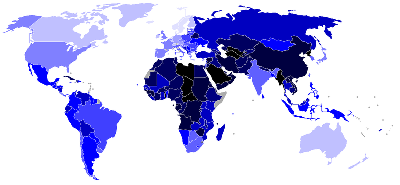
Figure 9. World Geography of Democracy as of 2007
Source: Wikipedia Article on Democracy
Note: Democracy index according to The Economist, 2007. The palest blue countries get a score above 9.5 out of 10 (with Sweden being the most democratic country at 9.88), while the black countries score below 2 (with North Korea being the least democratic at 1.03).
Click on the figure to view a larger image.
|
The trend toward democratic governance needs to become a trend toward sustainable democracies; else, there may be a regression to totalitarian or theocratic forms of government in a futile attempt to avoid the challenge of the sustainable development process. There is also the question of democratic global governance. The only conceivable way to attain politically sustainable democracy at all levels (local, national, global) is to have checks and balances (within levels and between levels) in accordance with the principle of subsidiarity (see
Wikipedia,
Acton,
Participative Democracy; see also the
July 2005 and
December 2005 issues of this journal).
Concrete examples can be found in the
Tenth Amendment to the United States Constitution and
Article 10 of the Constitution of the European Union.
Subsidiarity blends the socioeconomic context (Section 5) and the socioecological context with the sociopolitical context of IHD. It helps to develop in people the difficult virtue of balancing authority and responsibility. This balancing of authority and responsibility is also required for economically sustainable democracy. In this regard, socioeconomic democracy is proposed as plausible way (when coupled with political subsidiarity) to improve social justice and reverse the trend toward further increase of the rich-poor gap, both within nations and between nations:
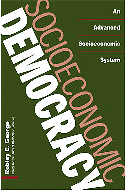
|
SOCIOECONOMIC DEMOCRACY: An Advanced Socioeconomic System, by Robley E. George,
defines and describes what is meant by the term Socioeconomic Democracy.
Socioeconomic Democracy is a model economic system, or more precisely, socioeconomic
subsystem, in which there is some form of Universal Guaranteed Personal Income
as well as some form of Maximum Allowable Personal Wealth, with both the lower bound
on personal material poverty and the upper bound on personal material wealth set and
adjusted democratically by all society.
|
|
Table 3. Socioeconomic Democracy by Robley E. George (2002)
Source: Center for the Study of Democratic Societies
Note: Click on the book cover to view a larger image and the book overview.
Hopefully, sections 3, 4, 5, 6, and 7 have provided some integrated insight (or, at least, some suggestions for further research) on the psychosomatically healthy, nuptially rooted, socially nurturing, ecologically sound, and politically feasible ways to foster IHD. The next section attempts to complete the "big picture" by taking into account the "inner picture" of the human person: the universal human desire (sometimes repressed) for communion with God. This desire transcends psychology and all manner of human relations, and is discussed in the next section on the religious-spiritual context for IHD.
8. The Religious-Spiritual Context for IHD
Religion is back! God is back! Actually, God is always present in human history, even if some might prefer to see religions disappear because "God is dead." The influence of religion (and religious institutions) on human and social development is undeniable, and it can have both positive and negative impacts on integral human development. Authentic religious devotion can lead to sacrificial self giving. But fanatical (fundamentalist) religious devotion can lead to barbaric violence and terrorism. Reflection on the sacred scriptures from various religious traditions leaves little doubt as to the kind of religious devotion that God desires.
Some people don't like to discuss politics. Some people don't like to discuss religion. This is probably because both subjects tend to be controversial, and they are controversial because they bring into focus the things that really matter (beyond food, water, shelter, and safety) in the secular and spiritual sides of human life, respectively. The previous section addressed secular political issues. This section deals with religion and religious politics.
Inasmuch as they are schools of spirituality and help people to undertake the inner journey and enjoy communion with God, religions provide an indispensable service to humanity. The various religious traditions encapsulate huge amounts of wisdom gathered down the ages. This is a treasure that must be conserved, purified, and transmitted to future generations. But while religious institutions are good in conserving and transmitting, they tend to procrastinate in purifying religious traditions from old taboos and old aberrations (such as the propensity to valuate the masculine over the feminine -- the so-called phallic syndrome) that accumulate over time and induce practices such as female genital mutilation, various forms of religious violence, and the exclusion of women from roles of religious authority.
So the problem is not the need for religion and spirituality. The problem is the lack of due diligence in religious institutions distinguishing between wisdom and garbage, and their propensity to conserve and transmit wisdom and garbage together in order to ensure religious orthodoxy. When sustaining religious orthodoxy is good for the psychosomatic and spiritual wellbeing of people, it makes sense to remain orthodox. But when sustaining doctrinal orthodoxy can be shown to be detrimental for the psychosomatic and/or spiritual wellbeing of people, then it is reasonable to suspect (without passing judgment about the intentions of religious authorities) that such doctrines are fabricated by human hands and need to be purified from human errors that have nothing whatsoever to do with what God desires.
A case in point is the continued refusal by some Christian churches (2.5 billion people, including the largest one, the Roman Catholic church -- 1.2 billion people) to allow feminine access to roles of religious authority. Given that IHD generally requires both masculine and feminine mentorship, it is self-evident that Roman Catholics are thereby liturgically deprived of a significant resource for IHD. Another case in point is the continued resistance from Islamic quarters to overcome primitive thinking and practices about male supremacy. To keep saying that this is what God desires is ridiculous and smells fishy -- this is not the time to play at being God; this is the time to seek divine guidance and do what is for the glory of God and the common good of humanity.
9. Suggestions for Prayer, Study, and Action
PRAYER SUGGESTION:
The Serenity Prayer
by Reinhold Niebuhr (1892-1971)
God, give us grace to accept with serenity
the things that cannot be changed,
Courage to change the things
which should be changed,
and the Wisdom to distinguish
the one from the other.
Living one day at a time,
Enjoying one moment at a time,
Accepting hardship as a pathway to peace,
Taking, as Jesus did,
This sinful world as it is,
Not as I would have it,
Trusting that You will make all things right,
If I surrender to Your will,
So that I may be reasonably happy in this life,
And supremely happy with You forever in the next.
Amen.
|
STUDY SUGGESTION:
ACTION SUGGESTION:
|
Write a letter to your secular and/or religious leaders, or perhaps to the editor of your local newspaper. Express your concerns. Ask honest questions. Request an answer. Be positive and respectful. Offer volunteer help. You can use a regular letter, or an e-mail, or any other media; but we are all responsible for communicating our concerns and insights to the proper authorities in both secular and religious institutions.
|
Archive of ESD Survey Forms & Reports
The Education for Sustainable Development (ESD) research project is moving forward as a series of surveys to identify the critical issues that sustainable developers must be ready to face. During the year 2009, survey test versions V0 to V1.7 have been posted. The survey is structured around the "key action themes" proposed by UNESCO for the "Decade of Education for Sustainable Development" (2005-2014):
The survey's design is based on:
- Paulo Freire's educational model of recursive questions and answers
- Ken Wilber's integral model of experience, behavior, systems, and cultures
- René Girard's mimetic theory of scapegoating behavior
- Note: For a complete description of the design evolution, click here
The survey of the design is stable. However, the questions still need more work pursuant to an optimal combination of brevity (maximum of 16 questions), neutrality (unbiased questions), and questionnaire coverage of the most critical issues in sustainable development. Thus far the responses have been as follows:
- As of 24 April 2009, 61 persons had taken the V0 test survey.
- As of 27 May 2009, 129 persons had taken the V1 test survey.
- As of 27 June 2009, 263 persons had taken the V1.5 test survey.
- As of 31 July 2009, 513 persons had taken the V1.6 test survey.
- As of 29 August 2009, 36 persons had taken the V1.7 test survey.
Links to the forms, data, and analyses for the initial series of surveys are listed below:
TEST SURVEY VERSION 0 (40 QUESTIONS) - APRIL 2009
TEST SURVEY VERSION 1.0/1.1 (40 QUESTIONS) - MAY 2009
TEST SURVEY VERSION 1.5 (40 QUESTIONS) - JUNE 2009
TEST SURVEY VERSION 1.6 (16 QUESTIONS) - JULY 2009
TEST SURVEY VERSION 1.7 (32 QUESTIONS) - AUGUST 2009
TEST SURVEY VERSION 2.0 - TBD
Version 2.0 is in preparation. Posting of V2.0 is planned for January 2010.
|Back to SUMMARY|
|Back to OUTLINE|
|Back to SECTION 1|
|Back to SECTION 2|
|Back to SECTION 3|
|Back to SECTION 4|
|Back to SECTION 5|
|Back to SECTION 6|
|Back to SECTION 7|
|Back to SECTION 8|
|Back to SECTION 9|
| Link to Page 2 |
| Link to Page 3 |
| Link to Page 4 |
| Link to Page 5 |
|Link to the Home Page|
|